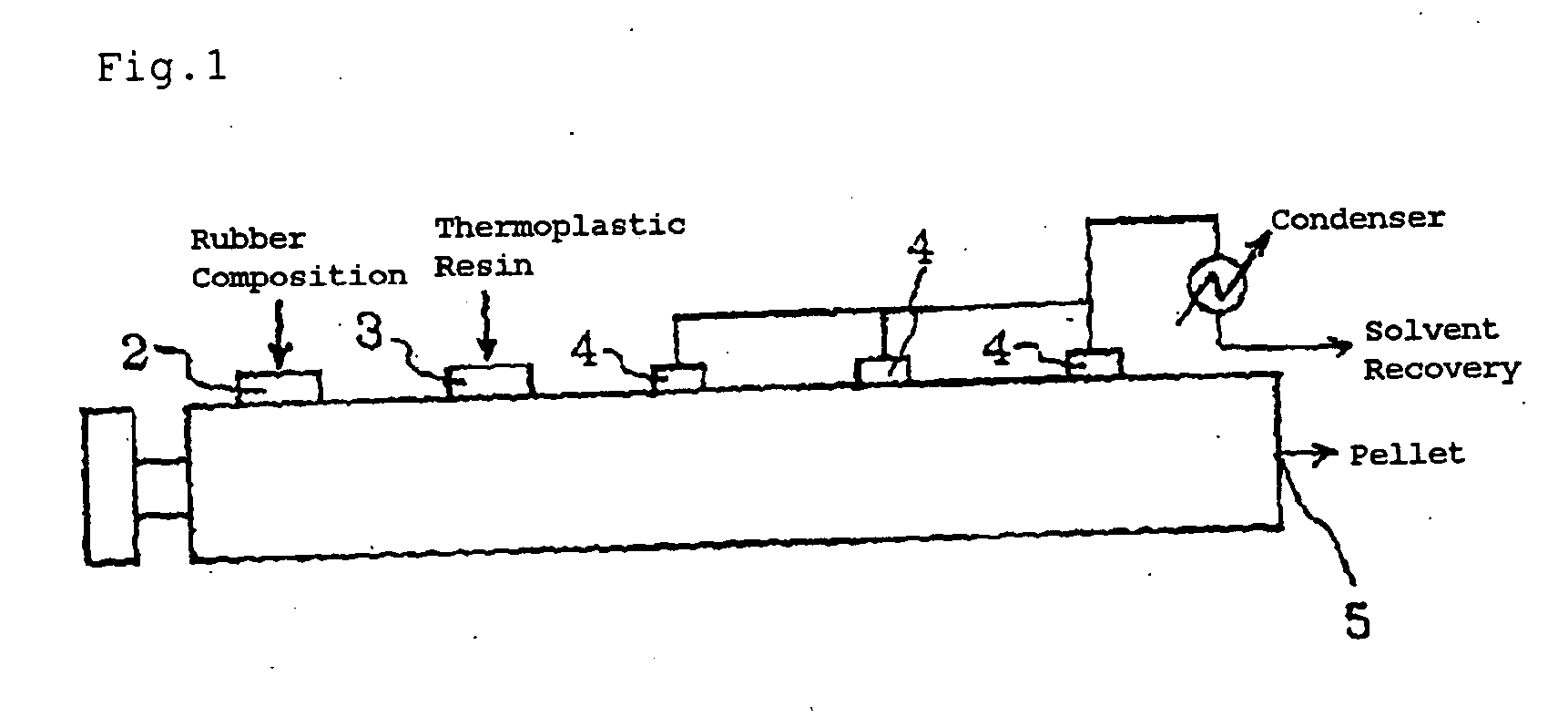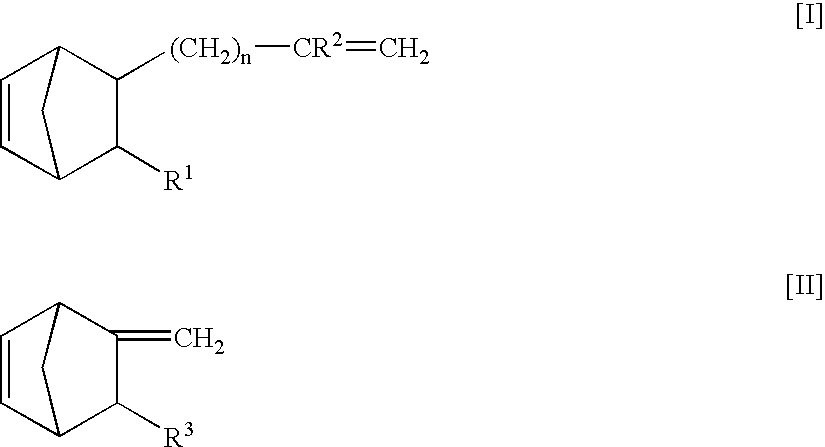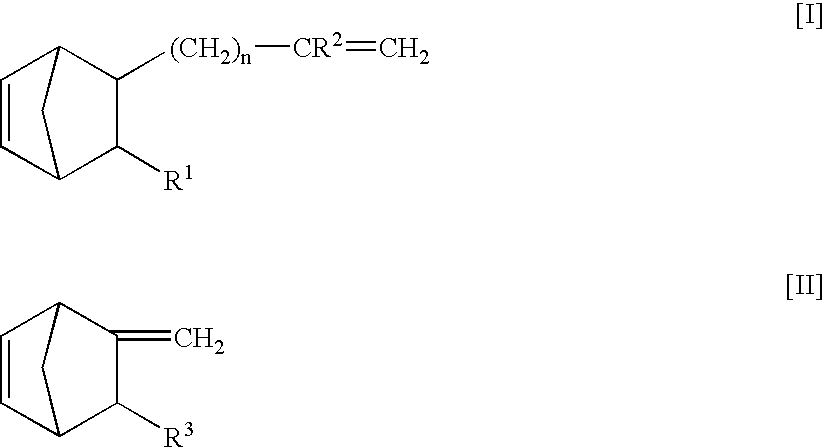Pellet comprising ethylene-alpha-olefin-non-conjugated polyene copolymer, method for producing thermoplastic elastomer, and method for producing pellet comprising ethylene-alpha-olefin-non-conjugated polyene copolymer
a technology of alpha-olefin and polyene, which is applied in the field of thermoplastic elastomer production method, and method for producing pellets comprising ethylenealpha-olefinnonconjugated polyene copolymer, which can solve the problem of reducing the throughput of blended rubber per unit time, defective products after produ
- Summary
- Abstract
- Description
- Claims
- Application Information
AI Technical Summary
Benefits of technology
Problems solved by technology
Method used
Image
Examples
examples
[0244] Hereinafter, the invention will be described by way of Examples, which are not, however, intended to limit the invention.
example a-1
Preparative Example A-1
Preparation of ethylene / propylene / 5-vinyl-2-norbornene random copolymer rubber (A-1)
[0245] Terpolymerization of ethylene, propylene and 5-vinyl-2-norbornene was carried out continuously using a polymerization vessel made of stainless steel which has a substantial capacity of 100 liters and which is equipped with a stirring blade (rotation speed of stirrer=250 rpm). Through a side portion of the polymerization vessel, the following monomers and components were continuously supplied in the liquid phase at the below-described rates: hexane at 60 liters / hr, ethylene at 3.8 kg / hr, propylene at 7.7 kg / hr, 5-vinyl-2-norbornene at 180 g / hr, and hydrogen at 40 liters / hr, VO(OEt)Cl2 and Al(Et)1.5Cl1.5 as catalysts at 10 mmol / hr and 70 mmol / hr, respectively.
[0246] As copolymerization reaction was carried out under the conditions as described in the above, an ethylene / propylene / 5-viyl-2-norbornene random copolymer rubber (A-1) was obtained in the state of a homogeneous ...
example 1-1
[0316] A solution of the copolymer rubber (A-2) prepared by solution polymerization according to Preparative Example A-2 (100 parts by weight of the rubber and 20 parts by weight of a plasticizer [Idemitsu Kosan Co., Ltd., tradename: Diana Process Oil TMPW-380: crosslinking inhibiting rate=1%]) was prepared such that the hexane solvent content was 7 parts by weight relative to 100 parts by weight of the rubber, to yield 127 parts by weight of a rubber composition containing a hexane solvent.
[0317] This rubber composition was introduced to a twin screw triple-vented extruder to remove the solvent, and the resulting rubber was cut into the pellet form at the front end of the extruder, thus a pellet (A-2-1) of the copolymer rubber (A-2) being obtained. The pellet blocking performance of this pellet (A-2-1) was evaluated, and the results are presented in Table 2. The grade was 3, which indicated that the pellet was at a level of being handlable.
[0318] Next, using 120 parts by weight o...
PUM
| Property | Measurement | Unit |
|---|---|---|
| degree of crystallinity | aaaaa | aaaaa |
| polymerization pressure | aaaaa | aaaaa |
| polymerization pressure | aaaaa | aaaaa |
Abstract
Description
Claims
Application Information
 Login to View More
Login to View More - R&D
- Intellectual Property
- Life Sciences
- Materials
- Tech Scout
- Unparalleled Data Quality
- Higher Quality Content
- 60% Fewer Hallucinations
Browse by: Latest US Patents, China's latest patents, Technical Efficacy Thesaurus, Application Domain, Technology Topic, Popular Technical Reports.
© 2025 PatSnap. All rights reserved.Legal|Privacy policy|Modern Slavery Act Transparency Statement|Sitemap|About US| Contact US: help@patsnap.com



